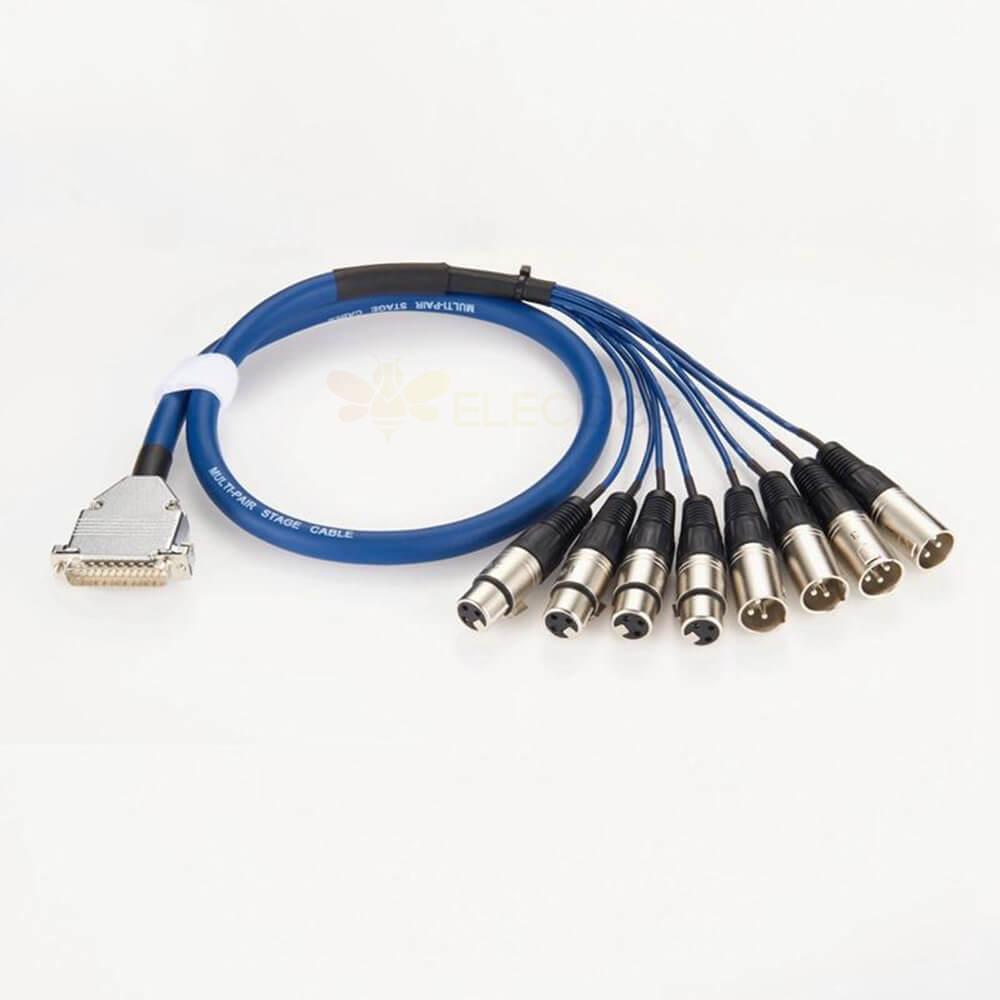If you're in the audio or music industry, chances are you've come across the XLR connector. This three-pin connector is widely used to transmit balanced audio signals, making it a staple in studios, live sound systems, and other professional audio setups. In this guide, we'll explore everything you need to know about XLR connectors, from their history to their applications and variations.
History of the XLR Connector
The XLR connector was first introduced in the 1950s by James Cannon, a former engineer at ITT Corporation. Originally designed as a connector for aircraft radios, the XLR connector quickly gained popularity in the audio industry due to its rugged build and ability to transmit balanced audio signals. Today, the XLR connector is a standard in the audio industry, and is used for everything from microphones to mixing consoles.

Types of XLR Connectors
There are several types of XLR connectors available, each with its own unique design and application. Here are some of the most common types of XLR connectors:
- 3-Pin XLR Connector: This is the most common type of XLR connector, and is used for balanced audio signals. It has three pins: one for the ground, one for the positive signal, and one for the negative signal.
- 4-Pin XLR Connector: This type of XLR connector is used for DC power connections, and is commonly found on professional video cameras and other equipment.
- 5-Pin XLR Connector: This type of XLR connector is used for DMX lighting control, and is commonly found in the entertainment industry.
- Mini XLR Connector: This is a smaller version of the XLR connector, and is commonly used for lavalier microphones and other applications where space is limited.
Applications of XLR Connectors
XLR connectors are widely used in the audio industry, and are used for a variety of applications. Here are some of the most common applications of XLR connectors:
- Microphones: XLR connectors are commonly used for microphones, as they provide a balanced audio signal and are rugged enough to withstand the rigors of live performance.
- Mixing Consoles: XLR connectors are used to connect microphones and other audio sources to mixing consoles. This allows sound engineers to control the levels and EQ of each source.
- Amplifiers: XLR connectors are used to connect mixing consoles and other audio sources to amplifiers. This allows the audio signal to be amplified and sent to speakers.
- Speakers: XLR connectors are used to connect amplifiers to speakers. This allows the amplified audio signal to be sent to the speakers, producing sound.
Variations of XLR Connectors
While the 3-pin XLR connector is the most common type, there are several variations of XLR connectors available. Here are some of the most common variations:
- Neutrik XLR Connector: This is a high-quality XLR connector, known for its rugged build and reliable performance.
- Switchcraft XLR Connector: This is another high-quality XLR connector, known for its reliability and durability.
- Mini XLR Connector: As mentioned earlier, this is a smaller version of the XLR connector, commonly used for lavalier microphones and other applications where space is limited.
- Right-Angle XLR Connector: This type of XLR connector has a right-angle design, making it ideal for applications where space is limited or where cable strain relief is important.
Maintaining XLR Connectors
Like any piece of equipment, XLR connectors require maintenance to function properly. Here are some tips for maintaining your XLR connectors:
- Clean the connectors regularly: Use a clean, dry cloth to remove any dust or debris from the connectors.
- Check the connectors for damage: Inspect the connectors regularly for any signs of damage, such as cracks or bent pins.
- Use strain relief: When connecting cables to XLR connectors, make sure to use strain relief to prevent damage to the connector.
- Store the connectors properly: When not in use, store the connectors in a dry, cool place to prevent damage.
Conclusion
XLR connectors are a crucial component in the audio industry, and are used for a variety of applications. Whether you're a sound engineer, musician, or audio enthusiast, understanding XLR connectors is essential for achieving high-quality sound. By following the tips in this guide, you can ensure that your XLR connectors function properly and provide reliable performance for years to come.
